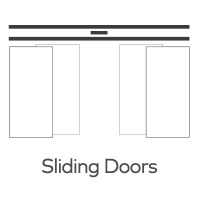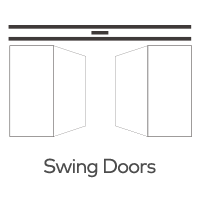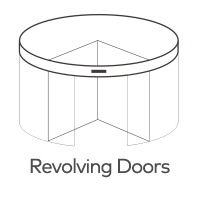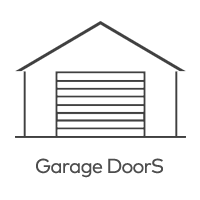How Do Laser Sensors Compare to Ultrasonic Sensors in Automatic Door Applications?
Automatic doors rely on various sensing technologies to detect motion or presence and operate efficiently. Among the most commonly used are laser and ultrasonic sensors. Both types have unique strengths and limitations, making them suitable for different applications. This article explores how laser sensors and ultrasonic sensors compare in the context of automatic door systems.

1. Detection Technology
- Laser Sensors:
- Operate by emitting and detecting light, often in the form of infrared or visible laser beams.
- Highly precise, capable of detecting small objects and fine movements.
- Best suited for applications requiring detailed detection zones or high accuracy.
- Ultrasonic Sensors:
- Use sound waves to detect motion or presence by measuring the time it takes for the waves to reflect back from an object.
- Effective for detecting larger objects and broader movements.
- Less precise than laser sensors but can cover wider detection areas.
2. Accuracy and Precision
- Laser Sensors:
- Provide superior accuracy, often with detection tolerances in the millimeter range.
- Can differentiate between objects based on size and shape.
- Ideal for environments requiring high precision, such as hospitals or laboratories.
- Ultrasonic Sensors:
- Less accurate, with detection influenced by factors such as object texture and density.
- May struggle with detecting small or highly absorbent objects (e.g., soft fabrics).
- Suitable for general-purpose applications where high precision is not critical.
3. Environmental Performance
- Laser Sensors:
- Perform well in clean and controlled environments.
- Susceptible to interference from reflective surfaces, fog, or dust, which can scatter or block the laser beam.
- Require regular cleaning and maintenance to ensure optimal performance.
- Ultrasonic Sensors:
- Better suited for harsh or variable environments.
- Less affected by dust, dirt, or lighting conditions.
- Can be impacted by extreme temperatures or high humidity, which affect sound wave propagation.
4. Range and Coverage
- Laser Sensors:
- Typically offer shorter detection ranges, often up to several meters.
- Provide focused and narrow detection zones, making them ideal for precise applications.
- Ultrasonic Sensors:
- Capable of detecting objects over longer distances, sometimes up to 10 meters or more.
- Cover wider detection areas, making them suitable for large entryways or open spaces.
5. Cost and Complexity
- Laser Sensors:
- Tend to be more expensive due to their advanced technology and precision capabilities.
- Require careful installation and calibration, increasing setup complexity.
- Ultrasonic Sensors:
- Generally more affordable and easier to install.
- Simpler calibration process, making them more accessible for basic applications.
6. Application Scenarios
- Laser Sensors:
- Preferred for environments requiring high precision, such as automatic doors in hospitals, laboratories, or high-security areas.
- Suitable for detecting small objects or ensuring precise alignment.
- Ultrasonic Sensors:
- Commonly used in retail stores, warehouses, or public buildings where broad detection coverage is essential.
- Ideal for detecting larger objects and general motion in less controlled environments.
Conclusion
Both laser and ultrasonic sensors have their advantages and limitations in automatic door applications. Laser sensors excel in precision and controlled environments, making them ideal for specialized applications. Ultrasonic sensors, on the other hand, offer broader coverage and greater resilience to environmental factors, making them a practical choice for general-purpose use. Selecting the right sensor depends on the specific requirements of the application, including accuracy, range, environmental conditions, and budget considerations.







